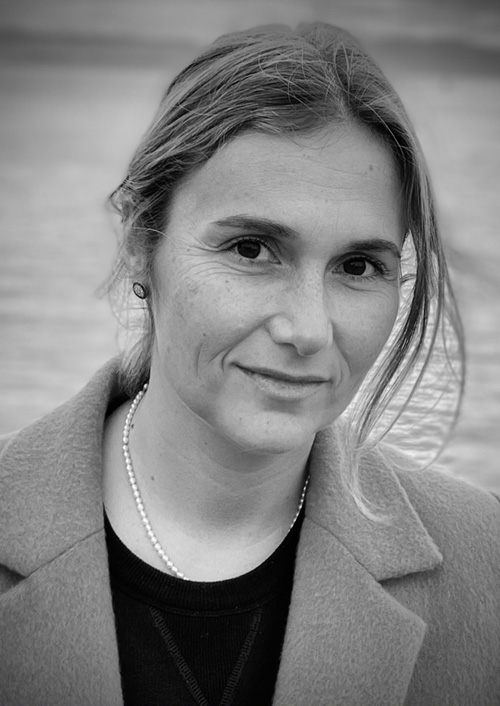At the end of 2010 she moved to New York, where she has worked for brands such as Ralph Lauren and The Row. She is currently COO of the emerging luxury brand Altuzarra and teaches in ISEM's Fashion Entrepreneurship 101 program in Miami.
What role has specialized training in fashion played in your career?
The FBA gave me an overview of the different departments that make up a company in this sector. Subjects such as finance, collection planning and operations gave me the knowledge base to plan my career.
Now, as a teacher, I try to teach students from the practical side: how to analyze costs, plan development and production schedules, create budgets and manage teams. It is important to have a general understanding of the business to be able to manage your own company.
What would you say are the qualities that a person who wants to work in fashion operations needs to develop?
It is important to know in depth all the processes and phases of the product; from the initial concept, until it reaches the stores. I would recommend working in development and production departments, both to be familiar with costs and schedules, and to develop product sensitivity.
How has the luxury sector reacted to the pandemic?
Improving the omnichannel experience. The pandemic has made luxury brands react by substantially improving their e-commerce, developing software, improving the shopping experience, investing in customer service and marketing campaigns.
The data show that the luxury sector has grown in the last two years, why do you think this is?
It is due to several factors: the growth of online sales, the Asian market, which has doubled in the last two years, and the consumption supported by Generations Z and Y, who are looking for new brands with a purpose of diversity and sustainability.
How have the operations of a fashion company changed?
The pandemic has managed to slow down the pace. After covid many brands decided to reduce the number of collections to be presented each year, being more aware of the time when the product arrives in stores, and some even decided to follow their own calendars outside the Fashion Weeks.
The post-covid world is more sustainable. Many retailers canceled orders or closed during the pandemic, forcing many brands to find another purpose for both materials and final production. These new practices and techniques for transforming deadstock and production will undoubtedly continue to evolve going forward and will be present in many collections.

THE FUTURE
One of the key issues in recent years has been how to translate the brand experience to sales through digital channels, which is especially crucial for premium brands. How do you translate the luxury customer experience to digital?
Personally, I don't think that the online experience of any luxury brand is comparable to any in-store experience, because it is very difficult to transfer. You have to take care of the quality of the images, give an almost immediate customer service, and take into account the packaging in which the product is sent. Many brands are developing technology to help in this regard, for example virtual testers, which help to see how the product feels. Still, online shopping gives you that convenience and above all immediacy that is essential when it comes to an aspirational or emotional purchase.
Another relevant trend is the rise of casual fashion: sneakers, leggings... Are they here to stay? Do you think it is good for luxury brands to compete in these fields?
Streetwear has been relevant for several years, but it grew especially during confinement because we all spent more time at home. In my opinion, it's a trend that is stabilizing as we get back to normalcy.
Even so, accessories such as sneakers, etc. are the star product of many premium brands, as they have a more accessible selling price. I think it is important to have an aspirational product at a lower selling price, both to generate sales volume and to give greater visibility to the brand.
Some major brands have opted to make capsule collections in collaboration with specialized brands, such as Gucci-The North FaceDo you think this could be a way of opening up luxury brands to new audiences? Have you done something similar at Altuzarra?
Undoubtedly, collections with specialized brands that have a working vision and philosophy similar to yours and take care of quality, make a lot of sense. During the pandemic, we have developed a collection with Castañer that will help us to open Altuzarra to new audiences that we would not have been exposed to with our own collections.
The most radical example of synergy between brands is the Hacker Project, Gucci-Balenciaga, two brands that a priori are in direct competition, to fight for a common cause. Do you think this is a good strategy?
Yes, I think it is a good strategy as long as both brands have a similar target. In this case both are luxury brands that target a similar consumer. There have also been other collaborations like Fendi and Versace with great media coverage.
How are premium brands working the second-hand market, rental, etc.?
The second-hand market, when it is well cared for, with a premium shopping experience, is an ally of luxury brands where the product can even be revalued.
For the premium brand consumer, companies like The Real Real offer quality at a more affordable retail price as well as sustainability.